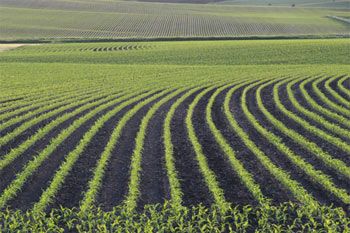Agri Innovations
Smart Management Can Help Growers Get the Most Bang for Their Buck on Fertilizer
Mon, 25 Feb 2013 11:26:36 CST

When traveling, knowing how much fuel is in your gas tank versus how much is needed to get to your destination is important. Similarly, knowing how much nitrogen you start with in the soil and how much is needed to get to maximum yields is critical. Realizing these numbers will help you be more efficient with your corn nitrogen (N) fertilizer.
"To obtain maximum yields and get the most out of your N application, it needs to be the right amount, at the right place and at the right time," says John Shanahan, DuPont Pioneer agronomy research manager.
Determining the correct N rate can be a challenge. First, assess how much is currently in the soil. One way to assess a field's N level is by researching how much was applied and measuring how much was taken off. This can be done by multiplying 0.66 (average pounds of N a bushel of corn removes) by the number of bushels produced per acre. Then subtract from the amount of nitrogen applied per acre. This will help you estimate the amount of residual N and determine how much you need to adjust for this year's application.
While most like to take a soil sample in the fall, taking a spring soil sample is another way to help determine the amount of N still left in the soil. After the residual amount of N has been found via a soil sample, assess the need of the coming crop to calculate an efficient N application.
"With our N fertilizer trials, if there was a lot free N from mineralization, we didn't see a large response after applying the N," Shanahan reports. "We will likely see a fair amount of free N this year due to the drought and lower yields, so knowing how much N is in the soil will help you apply the right amount this spring."
When applying N, placement is important. Applying N in a band and adjacent to the plant with incorporation can often be the most cost effective and decrease your N losses. Making sure the applicator is calibrated correctly allows you to better control and place the N.
The ideal time for plants to receive N is just after emergence. With applications of N in the spring and at side-dressing time, crops are able to utilize more of the N and increase yields. However, applications in the fall with a mild winter, like this past winter, will also provide a sufficient amount of N in the soil at the right time.
WebReadyTM Powered by WireReady® NSI


















